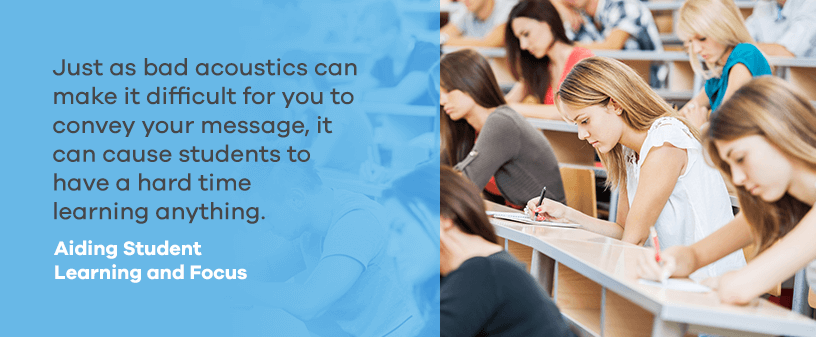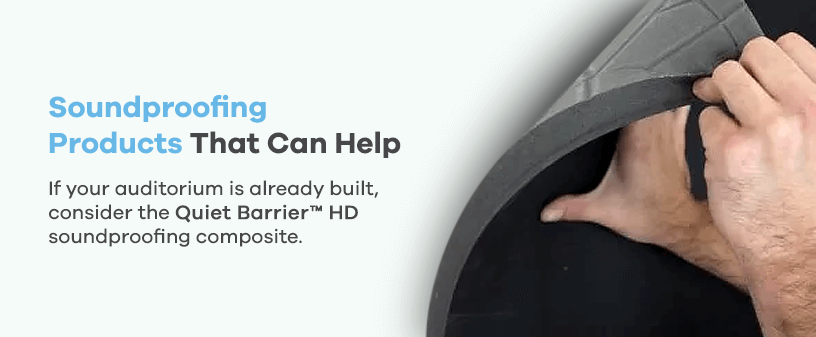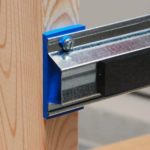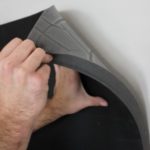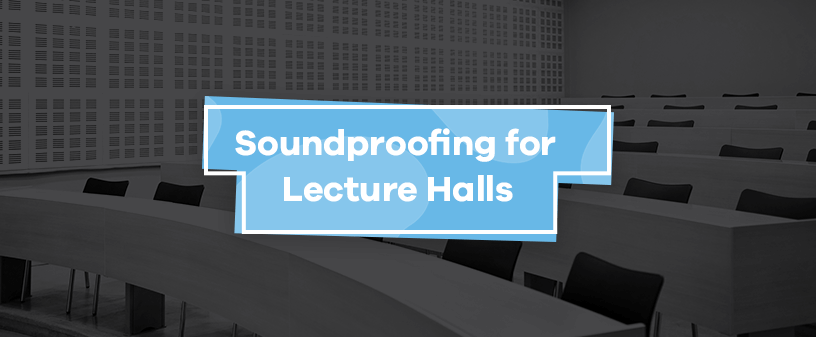
When you walk into a lecture hall to hold class, you’d no doubt like for the students to have a great experience. You’re there to help them learn, and a clear understanding of what you’re saying is vital to the student. The last thing you want is to have rows of students straining to hear you — or, worse yet, giving up and deciding they’d be better off just skipping class.
Unfortunately, many university lecture halls are plagued by acoustical issues, whether it be excessive reverb or intrusive outside noises. The good news is that during long breaks, in the absence of classes taking place on campus, you have plenty of time to renovate those rooms to optimize their acoustics before they’re once again filled with students.
Why Acoustics Matter in a Lecture Hall Setting
The concept of acoustics revolves around the way sound moves. This means that when addressing the acoustics of a lecture hall or auditorium, you have to look at how sound waves will behave when traveling through the space. Sound waves are affected by many different things, but a handful of qualities impact the acoustics of lecture halls the most — size, architecture and materials.
- Size: Lecture halls are distinct from normal classrooms because of how large they are. Since sound weakens as it travels, the greater distances between walls impact how audible a lecture is.
- Architecture: Sound waves reflect off objects they hit, but the shape of the objects determines where they’re reflected. Convex shapes, for example, distribute sound more widely than flat or concave ones.
- Materials: Just as the shape of a reflector affects how it reflects sounds waves, so does what it’s made of. A soft, cloth-like material will absorb sound, while a metal surface will cause high reverberation.
So why do these things matter? Since each of these factors can impact the way sound waves travel, that means they can distort sound in negative ways. They can make it harder to understand, or even hear, speech. Size can reduce the volume of the sound over long distances, architecture can reflect the sounds in all the wrong directions, and certain materials can send sounds reverberating back in an indecipherable cacophony.
Similar to regular classrooms, the entire purpose of lecture halls is to transmit information. So when the very structure of the room hinders that flow of information, the room defeats its own purpose, so you want to make sure the acoustics are working in your favor.
Helping Professors Present More Clearly
Bad lecture hall acoustics can have a significant negative impact on speakers and professors. Speaking to large groups of people doesn’t come naturally to everyone, and if you’re struggling to adequately convey your message, things will only go downhill. Here are a couple of ways to help lecturers present more clearly.
Increase Volume
Students farther away from you, particularly those in the very back few rows of seats, can have trouble hearing your voice at all. By the time the sound reaches them, it can be faint and hard to understand. To compensate, you may have to speak more loudly. But increased volume brings its own problems. More than one professor knows the feeling of walking into a class late in the day and realizing they’ve lost their voice from half-shouting in all their previous classes.
A good solution to this issue is to install a sound system in the lecture hall. By speaking into a microphone and having your voice projected by speakers distributed around the room, you can enable all the students to hear you equally well without you straining your voice. This solution is one that many universities have already implemented.
Decrease Reverb
Unfortunately, sound systems can’t fix everything. Even if the students can hear your voice, they still may not be able to decipher the words you’re saying. If the room has too much reverb due to its architecture and materials, the echoes of your voice can become muddled together as you talk, significantly reducing speech intelligibility.
To fix this problem, you can do a few different things. If you’re constructing a new building, have the architects structure the room for optimal acoustics. They can then use more absorbent materials to construct its interior. But what if the building’s already finished? In that case, you can install different sound absorption materials on the walls of the room to help reduce the reverb. You can also make sure to use clear and precise pronunciation when lecturing.
Aiding Student Learning and Focus
Just as bad acoustics can make it difficult for you to convey your message, it can cause students to have a hard time learning anything. Some of these issues arise from the previously mentioned problems on your end, but others exist on top of them. Here are a few ways to help students stay focused and engaged.
Reduce Background Noise
Foremost among these issues is background noise. Lecture halls may be sealed off from the world around them by their walls, but those walls often aren’t enough to stop outside noises from getting in. Cars driving past on the road, air conditioning units right outside the window, and the voices of other professors lecturing in the room next door can all move about in the background, distracting students from the lecture. On top of hurting their learning process, so much excessive noise is just bad for their health — and yours.
Facilitate Interaction
More professors are asking students in lecture hall classes to interact with each other, which can lead to many different voices filling the room at once. Here is another reason why it can be useful to cut down on reverb — with that many voices echoing everywhere, things can quickly get out of hand.
Of course, sound absorption materials won’t help block out noises from outside the room. To do that, you’ll want to look into installing some soundproofing materials, which can insulate the acoustics of the room and eliminate distractions.
Soundproofing Products That Can Help
What kinds of soundproofing materials can help keep noises out of a lecture hall? At Soundproof Cow, we offer two main materials you might consider implementing.
- isoTRAX®: The isoTRAX® soundproofing system is designed to go inside the walls of your lecture hall while it’s under construction. By separating the connection points between adjacent rooms and muffling sounds with pads, they can cut down on the sound coming in.
- Quiet Barrier®: If your auditorium is already built, consider the Quiet Barrier® HD soundproofing composite. It consists of industrial-grade foam products fashioned into acoustic wall panels, which further absorb any sound coming in.
Either of these can make a significant difference in the acoustics of a lecture hall, but with both together, you can eliminate as many distracting sounds as possible.
Soundproof Your Lecture Hall Today
If you’ve been consistently struggling to convey lecture material or keep students’ attention, the problem might be with the acoustics of the room where you’re lecturing. Since you can’t change the architecture, your best bet is to install the right soundproofing materials.
Soundproof Cow has your back. We’ll bring our solutions-based sound reduction approach to your college campus, and help you get the right equipment in place so your students can regain their focus and learn what you’re teaching them. Just get in touch with us today to get started!



